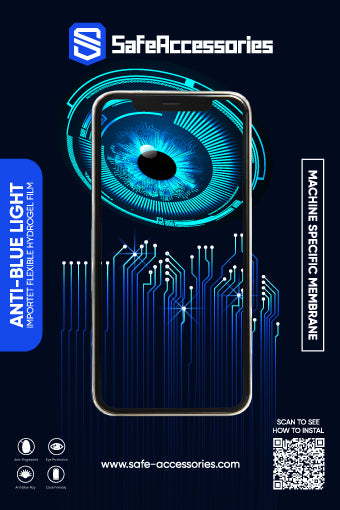The Impact of Blue Light on Children's Sleep and Health
Share
Introduction
As children increasingly use electronic devices for learning and entertainment, it's essential to understand the potential effects of blue light on their sleep and overall health. Blue light, emitted by screens of tablets, smartphones, and computers, can disrupt sleep patterns and cause various health issues. In this blog post, we'll delve into the impact of blue light on children's sleep and health and explore practical strategies to mitigate its effects.
Understanding Blue Light
Blue light is a high-energy visible (HEV) light with short wavelengths. It is present in natural sunlight and is essential for regulating our sleep-wake cycles. However, excessive exposure to artificial blue light from screens, especially in the evening, can interfere with the body's natural sleep patterns by suppressing the production of melatonin, the hormone responsible for sleep.
External Link: Learn more about blue light and its effects at Sleep Foundation.
Effects of Blue Light on Children's Sleep
-
Delayed Sleep Onset
Exposure to blue light in the evening can delay the onset of sleep in children. When children use screens close to bedtime, the blue light can trick their brains into thinking it's still daytime, making it harder for them to fall asleep.
-
Reduced Sleep Quality
Blue light exposure can lead to reduced sleep quality by disrupting the natural sleep cycles. Poor sleep quality can result in daytime drowsiness, difficulty concentrating, and irritability, affecting children's performance in school and daily activities.
-
Shortened Sleep Duration
Children who use electronic devices before bed may experience shortened sleep duration. Insufficient sleep can have long-term health consequences, including weakened immune systems, obesity, and behavioral problems.
External Link: Discover the impact of screen time on sleep at American Academy of Pediatrics.

Health Implications of Blue Light Exposure
-
Eye Strain and Discomfort
Prolonged exposure to blue light can cause digital eye strain, leading to symptoms such as dry eyes, headaches, and blurred vision. Children may be more susceptible to these effects due to their developing eyes.
-
Disrupted Circadian Rhythm
The circadian rhythm is the body's internal clock that regulates the sleep-wake cycle. Blue light exposure in the evening can disrupt this rhythm, leading to sleep disorders and other health issues.
-
Potential Long-Term Effects
While research is ongoing, some studies suggest that long-term exposure to blue light may contribute to more severe health problems, including an increased risk of macular degeneration, a condition that affects vision.
Internal Link: Explore our Blue light filter for phones.
External Link: Learn about the effects of blue light on eye health at American Optometric Association.
Strategies to Mitigate Blue Light Exposure
-
Implement Screen Time Limits
Set specific time limits for screen use, especially in the evening. Encourage activities that do not involve screens, such as reading, playing outside, or engaging in creative hobbies.
-
Use Blue Light Blocking Products
Invest in blue light blocking products such as screen protectors and glasses. These products are designed to filter out harmful blue light, reducing its impact on the eyes and sleep.
Internal Link: Discover our Blue Light Filter Glasses.
External Link: Find the best blue light blocking products at Healthline.
-
Create a Bedtime Routine
Establish a consistent bedtime routine that includes winding down activities such as reading a book or taking a warm bath. Avoid screen use at least an hour before bedtime to allow the body's natural sleep processes to take over.
-
Adjust Device Settings
Most modern devices have settings to reduce blue light emission. Enable features like "Night Shift" on iOS devices or "Blue Light Filter" on Android devices to reduce blue light exposure during evening use.
Internal Link: For more tips on managing screen time, visit our Screen Time Management Guide.
-
Educate and Encourage Healthy Habits
Teach your children about the importance of healthy screen habits. Encourage them to take regular breaks from screens, follow the 20-20-20 rule (every 20 minutes, look at something 20 feet away for 20 seconds), and engage in physical activities.
External Link: Discover more ways to promote healthy screen habits at Common Sense Media.
Conclusion
Understanding the impact of blue light on children's sleep and health is essential for creating a safe and healthy digital environment. By implementing practical strategies such as setting screen time limits, using blue light blocking products, and establishing a bedtime routine, parents can help mitigate the effects of blue light and promote better sleep and overall well-being for their children. At Safe-Accessories, we offer a range of products designed to reduce blue light exposure and support healthy tech habits. Explore our collection today and take the first step towards protecting your child's health.



